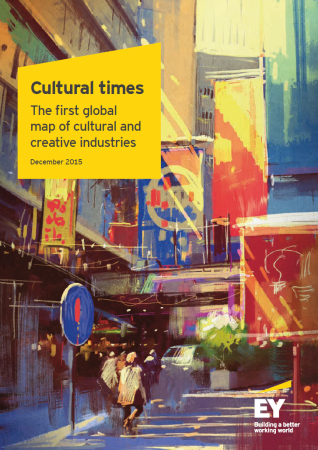Cultural Times: the first global map of the cultural and creative industries

“The world has a shared history and a rich, diverse cultural heritage. This heritage is cherished globally as an asset that belongs to us all, yet gives our societies their identity and binds them together, nurturing a rich cultural and creative present and future. That is why stakeholders of the creative and cultural world must do everything in their power to preserve this heritage and the diversity of actual cultural content, amid a political and economic climate that is subject to major upheavals.
The idea behind this report is that the economic weight of cultural and creative industries (CCI) in mature and emerging economies is partially described, misunderstood and undervalued. This is why the International Confederation of Societies of Authors and Composers (CISAC - the body representing authors’ societies worldwide) - decided to commission a global study of the economic and social impact of CCI, focusing especially upon revenues and employment. The study has the following objectives:
• To produce a comparative, quantitative and qualitative analysis of cultural and creative industries
• To understand the overall economic role of CCI globally, by sector and by region
• To put these analyses into perspective against the past, current and future economic situation
• To show how, and to what extent, CCI may be a driving force for global economic growth
• To produce a comprehensive report with examples of the diversity and complexity of CCI worldwide
This study encompasses a wide range of creative activities combining the creation, production and distribution of cultural content. Unlike other studies, we have included all activities related to the performing arts (including dance, opera, ballet and live music) and visual arts (museums, visual arts creation, art market and design activities). In addition, EY’s study is the first to separately assess the economic value of each CCI individually, and at a global level.” (p.11)
